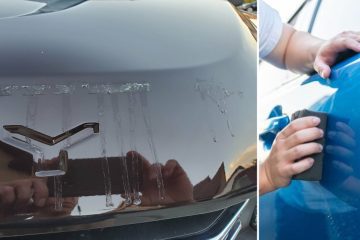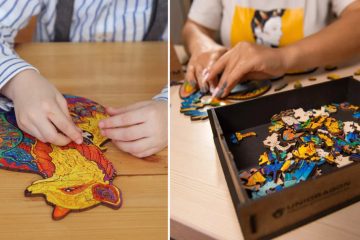Gluing styrofoam to wood is a useful technique for construction projects, crafts, and prototyping. The lightweight and insulating properties of styrofoam combined with the strength and versatility of wood create a unique composite material. In this article, we will cover everything you need to know about how to glue styrofoam to wood. We will go over selecting the right adhesive, proper surface preparation, application techniques, joining methods, and finishing touches. With the help of this guide, you’ll be able to achieve strong, durable bonds between styrofoam and wood.

Key Takeaways:
- Polyurethane wood glue provides the best all-around bond for styrofoam and wood.
- Lightly sand and clean surfaces before gluing.
- Clamp, screw, weigh, or tape pieces while adhesive cures.
- Avoid using hot glue guns directly on styrofoam.
- Let the adhesive fully cure before stressing the joint.
Why Glue Styrofoam to Wood?
There are several reasons you may need to adhere styrofoam to wood:
- Insulation – Gluing styrofoam to wood studs or roof decking provides thermal insulation and energy efficiency.
- Strength – The wood provides structural rigidity to crafts and prototypes made with lightweight styrofoam.
- Versatility – Combining the two materials allows builders and crafters to utilize the best properties of each material.
- Crafts – Many hobbyists glue styrofoam and wood together to create decorative pieces like flower arrangements, ribbons, wreaths, etc.
5 Faithful Steps for How to Glue Styrofoam to Wood
Here are the steps to follow for how to glue styrofoam to wood:
Step 1: Selecting the Right Adhesive
Choosing the appropriate adhesive is crucial for bonding styrofoam to wood. Here is a comparison of common adhesive types:
| Epoxy | Two-part resin and hardener | Chemical reaction | High | Metals, ceramics, wood, plastics |
|---|---|---|---|---|
| Polyurethane | One or two-part polymer | Moisture or chemical reaction | High | Flexible and rigid substrates, transport industry |
| Polyimide | One-part synthetic polymer | Solvent evaporation or heat | High | High temperature and chemical resistance, coating, electronic insulation |
| Cyanoacrylate | One-part acrylic | Moisture and UV light | High | Porous and non-porous substrates, small repairs |
| Hot melt | Thermoplastic polymer | Heat | Low to medium | Packaging, woodworking, crafts |
| Water-activated | Starch or animal-based | Water | Low to medium | Paper, cardboard, envelopes |
| Spray acrylic | One-part acrylic | Solvent evaporation | Medium to high | Paper, cardboard, foam, fabric, metal, plastic |
| Spray rubber | One-part rubber | Solvent evaporation | Low to medium | Paper, cardboard, foam, fabric, leather, plastic |
| Spray silicone | One-part silicone | Moisture | Low to medium | Rubber, plastic, metal, glass, wood |
| Spray polyurethane | One or two-part polyurethane | Moisture or chemical reaction | Medium to high | Wood, metal, plastic, foam, fabric, leather |
As the table shows, polyurethane glues, epoxy, and spray adhesives offer a strong bond between styrofoam and wood. Construction adhesives also work very well.
For most applications, a polyurethane wood glue such as Gorilla Glue or Titebond Polyurethane Glue provides the best all-around performance.
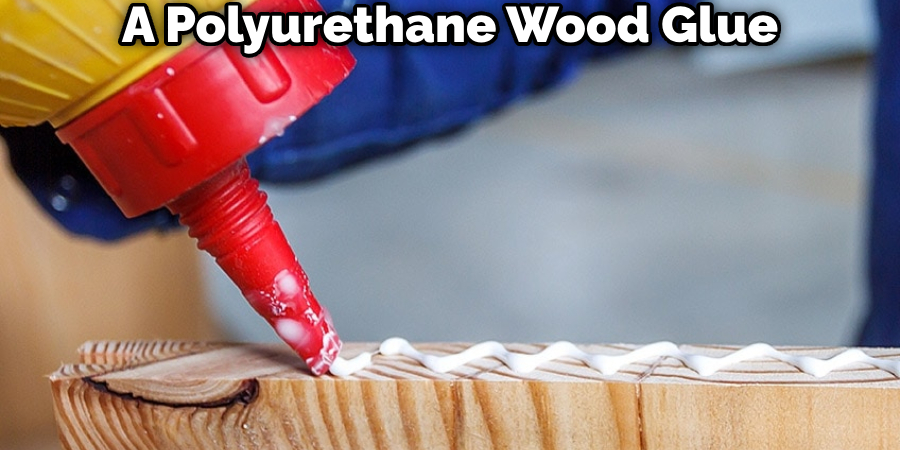
Step 2: Prep the Surface
To achieve effective adhesion, the surfaces must be prepared properly:
- Clean the surfaces with a dry cloth to remove dirt, dust, or debris.
- Lightly rough up the surfaces using 120-150 grit sandpaper. This helps the adhesive grip better.
- Apply primer if desired. Primer enhances adhesive bonding on some surfaces.
- Wipe clean again with a dry cloth.
Step 3: Apply the Adhesive
Spread a thin, even layer of adhesive on both surfaces using a brush or roller:
Avoid using too much adhesive as it can be messy and cause drips if it squeezes out.
Let the adhesive tack up slightly before joining the pieces. This helps prevent sliding.
Step 4: Clamp and Join
There are several techniques to join the styrofoam and wood securely:
- Clamps – Apply pressure with bar clamps while the adhesive dries.
- Screws – Use wood screws to mechanically fasten the pieces together. Pre-drill holes in the styrofoam to prevent cracking.
- Weight – Place heavy objects on top to apply downward force as the adhesive cures.
- Tape – Tape can hold materials in place while glue dries. Use masking or duct tape.
Leave the pieces undisturbed as directed by the adhesive manufacturer, usually 24 hours for most wood glues.
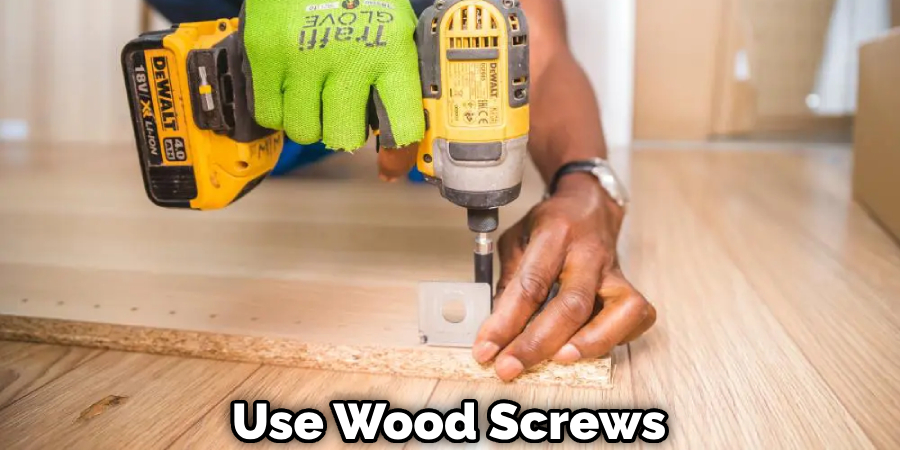
Step 5: Finishing Touches
After the adhesive has fully cured, a few finishing steps can give a polished look:
- Sand the surface with fine 220+ grit sandpaper to smooth out any ridges.
- Paint or prime & paint to achieve the desired finish color.
- Optional – Apply protective sealer or clear coat for added durability.
You Can Check It Out to Glue Wood to Acrylic.
4 Tips and Warnings for How to Glue Styrofoam to Wood
Here are 4 tips and warnings for gluing styrofoam to wood:
- Avoid using hot glue guns directly on styrofoam as the heat can melt it.
- Work in a well-ventilated area when using spray adhesives or solvent glues like epoxy or contact cement.
- Make sure to apply even clamping pressure to prevent weak spots in the bond.
- Let the adhesive fully cure before applying stress or weight to the bonded pieces.
You Can Check It Out to Glue Wood to Brick.
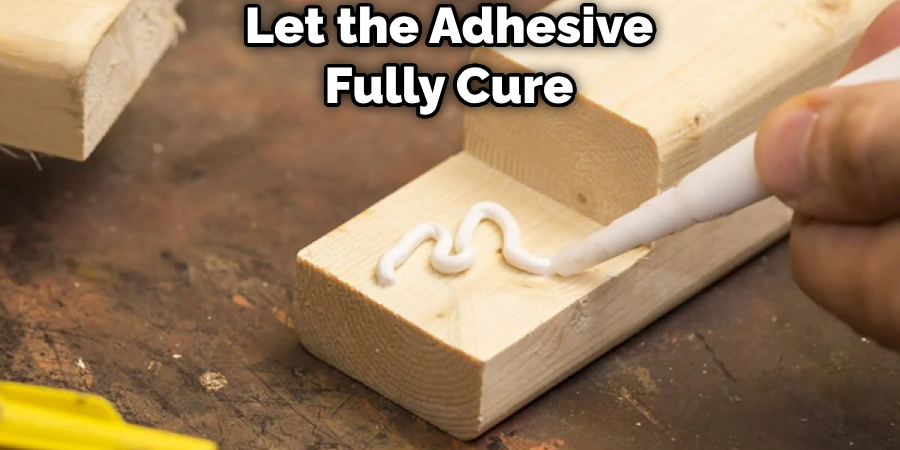
FAQs About How to Glue Styrofoam to Wood
Can I Use Silicone to Glue Styrofoam?
Yes, you can use silicone to glue Styrofoam. Ensure the surfaces are clean, apply the silicone adhesive, press the surfaces together firmly, and allow the adhesive to cure according to the manufacturer’s instructions. Keep in mind the need for good ventilation and consider the weight bearing requirements of your project.
What Kind of Glue is Safe for Styrofoam?
The safest and most effective glue for Styrofoam is a specialized foam adhesive or a low-temperature hot glue gun. These types of adhesives are designed to bond to Styrofoam without causing damage. It’s important to avoid solvent-based glues, such as certain types of super glue or spray adhesives, as they can dissolve or damage the Styrofoam. Always check the label or product specifications to ensure that the glue is specifically formulated for Styrofoam.
What Glue Works Best on Styrofoam?
The best glue for Styrofoam is a specialized foam adhesive or a low-temperature hot glue gun. These adhesives are specifically formulated to bond to Styrofoam effectively without causing damage. They provide a strong hold while being safe for the Styrofoam material. It’s important to avoid solvent-based glues, such as certain types of super glue or spray adhesives, as they can dissolve or damage the Styrofoam. Always check the label or product specifications to ensure that the glue is suitable for use on Styrofoam.
Does Styrofoam Stick to Wood?
Yes, Styrofoam can stick to wood using the appropriate adhesive. Using a specialized foam adhesive or a low-temperature hot glue gun can effectively bond Styrofoam to wood. These adhesives are designed to create a strong bond without damaging the Styrofoam or the wood. It’s important to ensure that the surfaces are clean and free of any dust or debris before applying the adhesive for the best results.
What is the Best Glue for Plywood to Styrofoam?
The best glue for bonding plywood to Styrofoam is a specialized foam adhesive or a low-temperature hot glue gun. These adhesives are designed to create a strong and reliable bond between the two materials without causing damage to the Styrofoam. It’s important to follow the manufacturer’s instructions for the adhesive you choose and to ensure that the surfaces are clean and free of any debris before applying the glue for optimal adhesion.
What is the Best Adhesive for Styrofoam to Plywood?
The best adhesive for bonding Styrofoam to plywood is a specialized foam adhesive or a low-temperature hot glue gun. These adhesives are designed to create a strong and reliable bond between the two materials without causing damage to the Styrofoam. It’s important to follow the manufacturer’s instructions for the adhesive you choose and to ensure that the surfaces are clean and free of any debris before applying the glue for optimal adhesion.
You Can Check It Out to Glue Polyethylene Foam.
Conclusion
Gluing styrofoam to wood involves selecting the right adhesive for the project, properly preparing the surface, joining the materials securely, and adding optional finishing touches. Following the steps in this guide will result in a strong, durable bond. Let us know if you have any other tips or questions!

